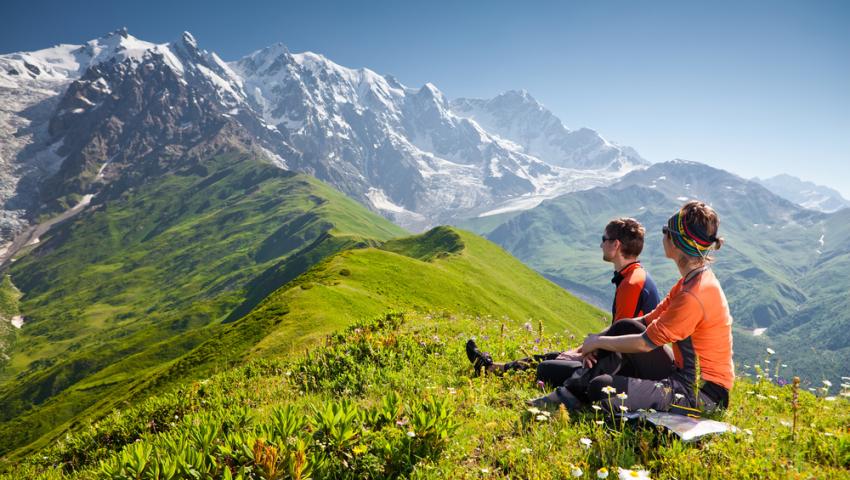Top Hiking Trails in Georgia This Summer

There’s nothing better than a long trail through a beautiful forest on a hot day. If you’re planning your next trip, take a moment to read our list of top 5 hiking trails in Georgia to try this summer.
Hiking Essentials
You’ll need a few essentials if you plan to take up hiking this summer:
Backpack
A good backpack should be lightweight enough to protect your back, but strong enough to carry all your essentials. Look for a backpack with padding in the straps and back, with plenty of ventilation to stop you from overheating.
Sandals
You might be wondering how to find the best hiking sandals if you’ve never bought them before. Hiking sandals are ideal for hot weather, or hiking alongside rivers or streams. Look for sandals with a strong grip to prevent you from slipping over, and quick-drying uppers so you won’t have to walk with wet feet for too long.
Water Bottle
The next thing essential is a water bottle or water bladder. You’ll need enough water to keep you hydrated along the trail.
Top 5 Must-Try Hiking Trails in Georgia
There are many stunning hiking trails in Georgia, with some incredible sights to see. With lush foliage, clear waters, wildlife, and plenty of history along the way, you’ll love coming here, especially if you’ve never been before. We’ve gathered a list of just 5 of the many gorgeous trails to try:
5. Raven Cliffs Fall Trail
If you want to visit the beautiful Chattahoochee National Forest, you should check out the Raven Cliff Trail. It will take you through a valley filled with waterfalls, and you’ll arrive at Raven Cliff Falls. A 400ft waterfall, it’s stunning.
It’s a moderately difficult trail at 4.9 miles for a round trip, so it’s worth a look if you have some hiking experience.
4. Blood Mountain Loop
With a high summit, the Blood Mountain Loop is one of the most popular hikes in North Georgia. It’s worth the effort for the stunning views of the Blue Ridge Mountains. Plus, you can stop off at an Appalachian Trail shelter for a bit of history, too.
This is one of the most difficult hikes. It’s 6 miles for a round trip, but it’s not suitable for beginners. We’d recommend it for those with a lot of hiking experience already.
3. Panther Creek Falls Trail
Panther Creek Falls Trail will take you along a series of waterfalls in an incredibly beautiful forest. The endpoint is Panther Creek Falls: multi-tiered waterfalls leading to a sandy beach. This trail is a showstopper.
It is a 6.9-mile round trip, with a moderate difficulty level. If you have some hiking experience, good gear, and decent stamina, we’d recommend giving it a try so you can see the falls for yourself.
2. Sliding Rock Trail (Tallulah Gorge State Park)
Tallulah Gorge is incredible. If you can get a gorge floor permit, you can hike the Sliding Rock Trail. It’s a challenge, but the payoff is so worth it. You’ll make your way through the Hurricane Falls Loop, go down into the gorge using the stairs, cross a suspension bridge, and then scramble down to the gorge floor to see the Bridal Veil Falls waterfall.
Gorge floor permits are limited to 100 per day. They’re free, so it’s a first-come-first-serve situation. It’s a 3.4-mile trail, but it’s tough. We’d only recommend it if you have a lot of hiking experience already under your belt. Dogs aren’t allowed however so you’ll have to leave them at home.
1. Conasauga River Trail
Located in the Cohutta Wilderness, this is a lush, vibrant trail. If you love hiking to spot wildlife, this is the one to go for. It’s the perfect trail for summer days, taking you along 36 river fords. With beautiful waters and foliage, it’s a long trail with plenty to see.
The trail comes in at 13.2 miles for a round trip. It’s a moderately difficult trail, so we’d recommend that you have at least a little hiking experience.
How to Stay Safe on a Summer Hike
Hiking is an amazing summer activity, but there are a few things to keep in mind to keep yourself safe.
Weather Protection
The night before a trail, it’s always a good idea to Google what the weather will be tomorrow. While you may not be expecting rain, you can check out other weather conditions, like how strong the winds will be.
You can also check the UV index and highest temperature for the day, which is good information to know in advance. If you know it’s going to be really hot, plan for enough time to take regular breaks in the shade. You should also apply sunscreen before you go, and take it with you so you can reapply it if you’re out for the day.
Hydration and Energy
Hydration is a key factor when it comes to hiking in hot weather. Research your trail beforehand to see if there are water points along the trail. If not, you’ll have to bring your biggest water bottle to keep you hydrated along the way.
It’s a good idea to pack some small, high-energy snacks to keep you going along the way.
Trail Research
Research your trail before you go. This will allow you to judge whether you feel your hiking experience is enough to tackle a new challenge. Plus, it will give you a heads up on certain hazards, like wildlife you should look out for, or any particularly difficult points along the way.
Hike in Groups
If you can, hike in a pair or in a group. This means if you were to get lost or injured, there will be others to help you.
If you do have to hike alone, make sure you tell people where you’re going and what time you expect to return.
We hope this has helped you to prepare for your next hiking adventure in Georgia!